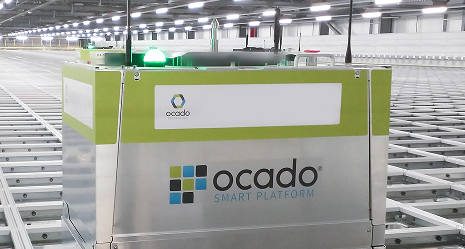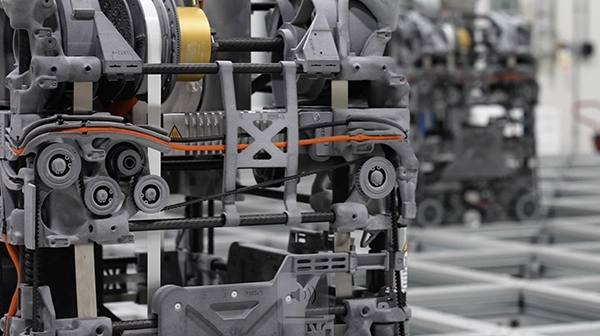Additive Manufacturing, or as it’s more commonly known ‘3D printing’ has been around for decades. People have been experimenting with additive techniques - where objects are manufactured by adding material layers to something rather than subtracting materials until you achieve the right shape - since the 1980s.
In that time though, the technique has struggled to find a mainstream footing in global supply chains. The process of printing (particularly large parts) can be slow, the materials have been expensive, and the skill-set required to operate the process has not been available at scale in global labour markets.
As a result, most industrial use cases of 3D printing today involve the development of small numbers of individual parts, which are then combined with wider traditionally manufactured parts to build a complex industrial product. We see this playing out in specialist sectors like aerospace and healthcare, as well as niche, smaller-scale applications, such as the creation of medical prosthetics or components for engines and aircraft.
Ocado’s latest-generation fulfilment robot, the 600 Series Bot, introduces an innovative approach. Rather than considering 3D printing as an additional process, we adopted an "additive first" strategy. This led us to design a highly advanced, multi-part, AI-powered industrial robot where 3D printing is central to its overall design. The result is the most advanced 3D-industrial-printed product in the world.
What is the 600 Series Bot?
The super-lightweight fulfilment robot, or “bot”, is core to managing the large and diverse inventory requirements of an Ocado Customer Fulfilment Centre (“CFC”). It runs along the top of a hive structure in which totes of products are stored up to 21 bins deep and across areas equivalent to multiple football fields.
The 600 Series Bot is responsible for collecting and carrying individual totes of product, either to move inventory to make it more efficient for future order picking, or to bring product directly to robot or human pick stations to be bagged ready for delivery.
In comparison to previous models, the lightweight design of the 600 Series Bot - enabled by 3D printing - allows for the creation of lighter grids in our automated warehouses. These lighter grids can reduce installation time by up to 40% compared to our previous grid system, whilst lowering installation costs.
The bot is three times lighter than its predecessor.

What is Additive Manufacturing?
Additive manufacturing, sometimes referred to as 3D printing, is the process of creating physical objects by adding material layer by layer from a digital design, adding material only when needed. Think of it like printing, but instead of layers of ink on paper, you are stacking thin layers of materials together to create a 3D object. This is in contrast to more traditional subtractive manufacturing, which involves ‘subtracting’ material - machining, cutting or drilling.
Why is Ocado’s use of Additive Manufacturing for the 600 Series Bot so unique?
By avoiding the delays of traditional manufacturing, which requires complex tooling with long lead times, our design team was able to swiftly design and enhance a complex, transformative product in its entirety.
This was achieved through:
- A disruptive additive-first approach
- Specialised expertise in the team
- And cutting-edge tools - working with industry partners.
1. A disruptive additive-first approach
In traditional manufacturing, processes and materials are designed to complement each other, and the more components you make the cheaper they become. There are however limitations to these manufacturing methods that make complex or intricate geometries expensive or impossible to produce. Additive manufacturing can unlock these highly complex part designs, but without the right design and optimisation, its part cost often limits the technology to specialised areas like aerospace and healthcare, as well as niche, smaller-scale applications, such as the creation of medical prosthetics or components for engines and aircraft.
Instead of modifying a design for manufacturing to incorporate specific 3D-printed parts, we designed the 600 Series holistically for additive manufacturing, visualising our bot as additive-first right from the start. This forward-thinking approach allowed us to exploit the design freedom of additive manufacturing while also optimising our parts to achieve a cost-effective solution.
Our ‘all-in’ additive approach covers the entire process from design to prototype and production, with technological processes crafted to facilitate production at scale. This approach makes a compelling business case for the 600 Series Bot that helps us deliver best-in-class economics.

2. Specialised expertise in the team
Additive manufacturing is a ground-breaking technology, yet it is tricky to implement because of the complexity and interdisciplinary knowledge it requires. This unique expertise remains a key barrier to the adoption of additive manufacturing.
The team drew on a diverse range of skills to help them deliver the 600 Series Bot - skills which are often different from those used in conventional manufacturing.
For example, in designing the bot, the team uses techniques typically found in the aerospace sector to enhance component strength while minimising unnecessary material. Thanks to this specialised knowledge, we can develop lightweight, precisely tuned designs.
What’s more, the team took inspiration from agile methods in software engineering. Agile methodologies are based on the principles of teams starting small, testing and iterating at every step, alongside working in time-boxed periods to deliver the most value. By employing an additive-first approach, the team were able to design, 3D print, and assemble concepts for the bot at pace.
3. Cutting-edge tools
During production, the team created a unified design tooling strategy that combines internal solutions with specialised cloud-based tools, significantly speeding up production and increasing agility. The tools consist of cloud-based design platforms such as Onshape for global collaboration and nTop for optimising lightweight designs. This digital environment enables them to test and refine prototype components with global teams within days instead of weeks, reflecting the iterative and agile techniques already employed by Ocado in software development.

The product is well-suited for additive applications. It is small enough to quickly produce and 3D print prototypes in-house, which further reduces development time. And by partnering with HP, a leader in Additive Manufacturing, the team has established cutting-edge equipment and printing capabilities for scaling up - from equipment setup to processes and beyond.
What’s next for Ocado’s 600 Series Bot?
Matt Whelan, Engineering Director at Ocado, points out:
Our focus on additive-first design, combined with our specialised knowledge and state-of-the-art tools, has allowed our teams to rapidly produce an additive product at an unprecedented scale, setting us apart in the industry with the world’s most advanced 3D printed industrial product."
As the team iterates on this cutting-edge bot at the bleeding-edge of industrial additive manufacturing applications, they aren’t only turning traditional manufacturing methods on their head; they are transforming fulfilment across industries.
Related content

OGRP: The next game changer
![[Video] How we use AI](https://cdn.prod.website-files.com/667974bf1bf45146cf81ef1f/671653547c524460a1e69b36_AI%20image.avif)
How we use AI

Ocado Group's Global Partners






